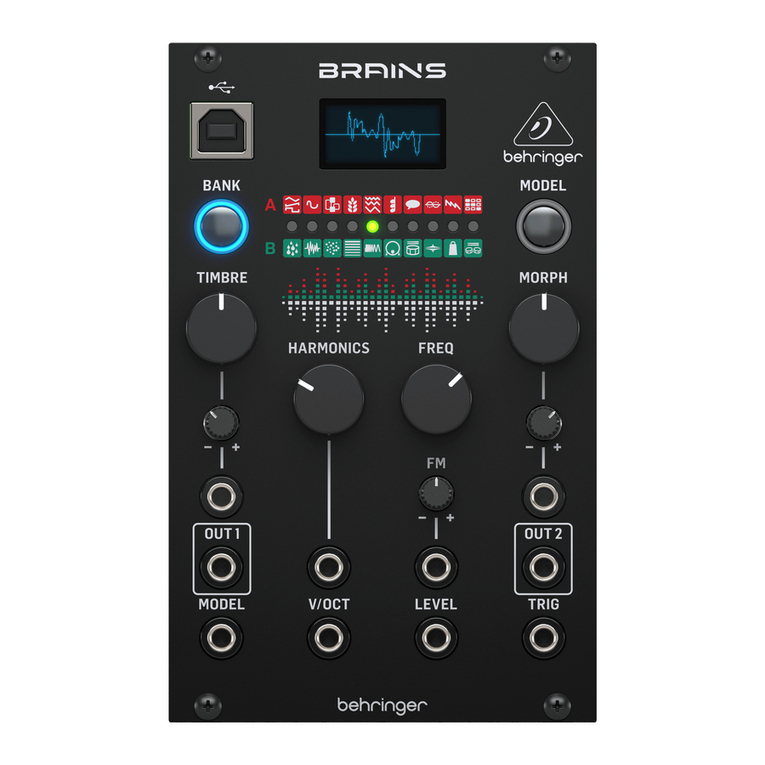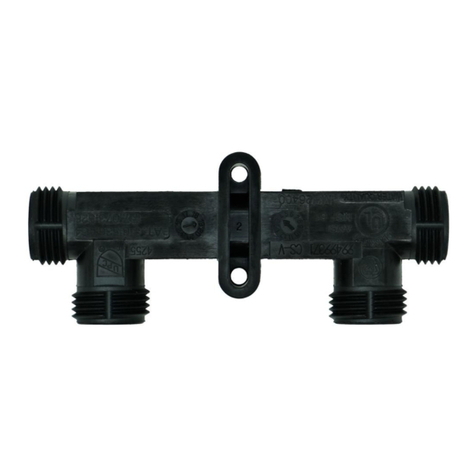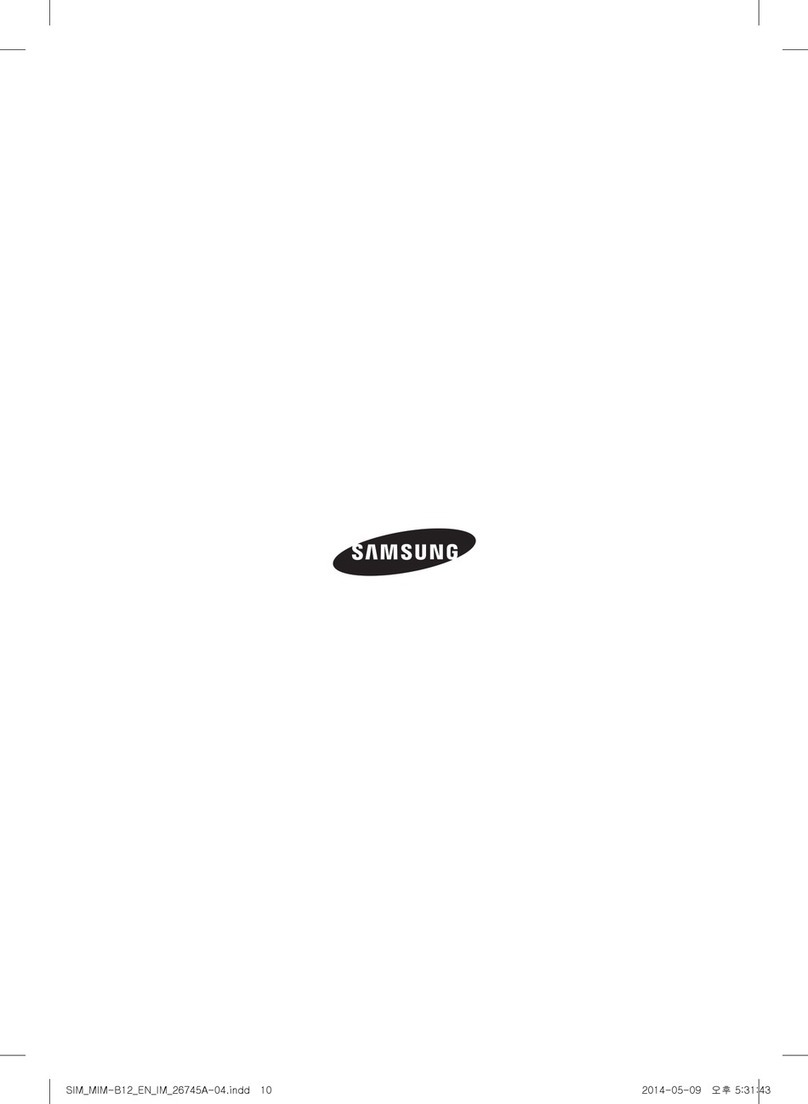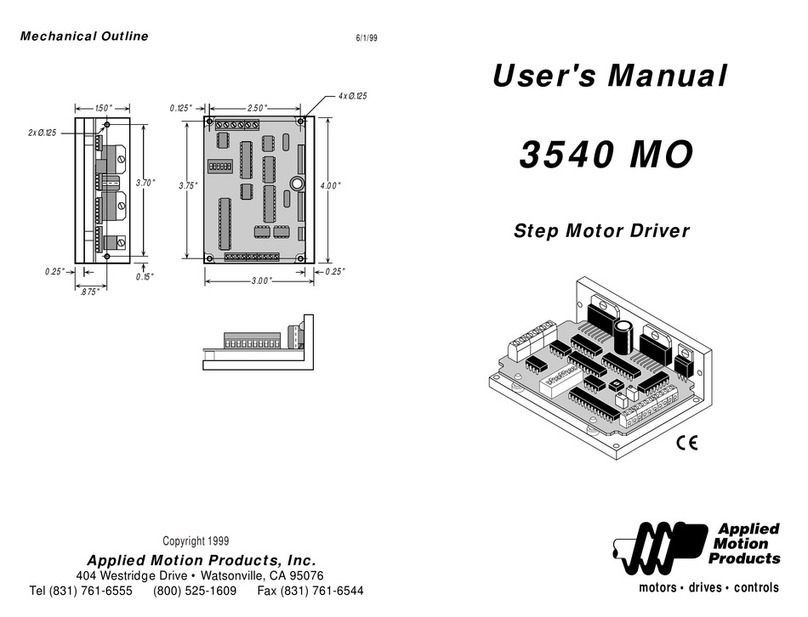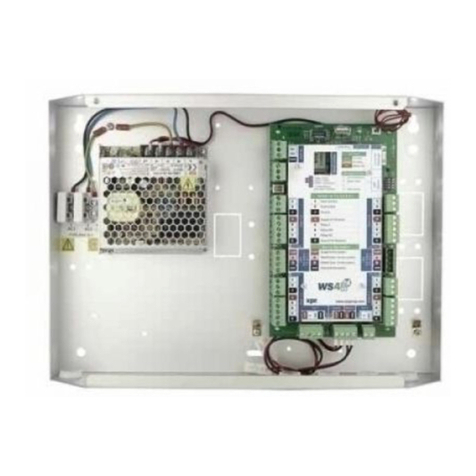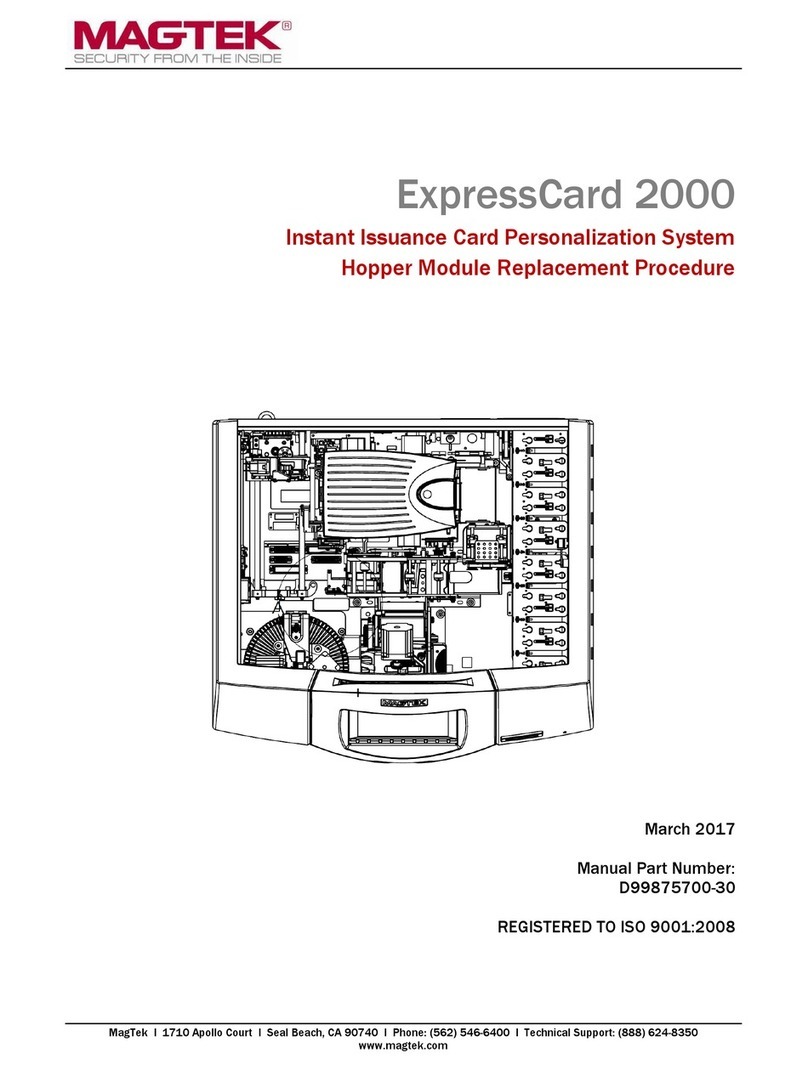GR GRP33-30LA User manual

OM−06222−AR01
November 18, 2008
Rev. B 03-31-11
CD
THE GORMAN-RUPP COMPANY DMANSFIELD, OHIO
www.grpumps.com
GORMAN-RUPP OF CANADA LIMITED DST. THOMAS, ONTARIO, CANADA Printed in U.S.A.
e2008 The Gorman-Rupp Company
INSTALLATION, OPERATION,
AND MAINTENANCE MANUAL
WITH PARTS LIST
AUTOMATIC AIR RELEASE VALVES
MODELS
GRP33−30LA GRP33−30LB
GRP33−30HA GRP33−30HB

TABLE OF CONTENTS
i
INTRODUCTION PAGE I − 1. . . . . . . . . . . . . . . . . . . . . . . . . . . . . . . . . . . . . . . . . . . . . . . . .
SAFETY − SECTION A PAGE A − 1. . . . . . . . . . . . . . . . . . . . . . . . . . . . . . . . . . . . . . . . . . .
INSTALLATION − SECTION B PAGE B − 1. . . . . . . . . . . . . . . . . . . . . . . . . . . . . . . . . . . .
PREINSTALLATION INSPECTION PAGE B − 1. . . . . . . . . . . . . . . . . . . . . . . . . . . . . . . . . . . . . . . . . . . .
AIR RELEASE VALVE INSTALLATION PAGE B − 1. . . . . . . . . . . . . . . . . . . . . . . . . . . . . . . . . . . . . . . .
OPERATION − SECTION C PAGE C − 1. . . . . . . . . . . . . . . . . . . . . . . . . . . . . . . . . . . . . .
THEORY OF OPERATION PAGE C − 1. . . . . . . . . . . . . . . . . . . . . . . . . . . . . . . . . . . . . . . . . . . . . . . . . . .
ADJUSTMENT PAGE C − 1. . . . . . . . . . . . . . . . . . . . . . . . . . . . . . . . . . . . . . . . . . . . . . . . . . . . . . . . . . . .
LEAKAGE PAGE C − 2. . . . . . . . . . . . . . . . . . . . . . . . . . . . . . . . . . . . . . . . . . . . . . . . . . . . . . . . . . . . . . . .
TROUBLESHOOTING − SECTION D PAGE D − 1. . . . . . . . . . . . . . . . . . . . . . . . . . . . . .
MAINTENANCE AND REPAIR − SECTION E PAGE E − 1. . . . . . . . . . . . . . . . . . . . . . .
AIR RELEASE VALVE DIMENSIONS PAGE E − 1. . . . . . . . . . . . . . . . . . . . . . . . . . . . . . . . . . . . . . . . .
PARTS LIST:
GRP33−30, GRP33−30A And GRP33−07B PAGE E − 3. . . . . . . . . . . . . . . . . . . . . . . . . . . . . . .
AIR RELEASE VALVE DISASSEMBLY AND REASSEMBLY PAGE E − 4. . . . . . . . . . . . . . . . . . . . . .
Air Release Valve Disassembly PAGE E − 4. . . . . . . . . . . . . . . . . . . . . . . . . . . . . . . . . . . . . . . . . . .
Air Release Valve Reassembly PAGE E − 5. . . . . . . . . . . . . . . . . . . . . . . . . . . . . . . . . . . . . . . . . . .

G-R OM−06222
PAGE I − 1INTRODUCTION
INTRODUCTION
Thank You for purchasing a Gorman-Rupp Auto-
matic Air Release Valve. Read this manual careful-
ly to learn how to safely install and operate your
equipment. Failure to do so could result in personal
injury or damage to the pump.
This Installation, Operation, and Maintenance
manual is designed to help you achieve the best
performance and longest life from your Gorman-
Rupp Air Release Valve.
The Automatic Air Release Valve is designed to in-
crease the priming efficiency of your Gorman-
Rupp self-priming centrifugal pump by venting air
from the pump during the priming cycle. After the
pump is fully primed, the valve automatically
closes and remains closed until the pump stops,
then re-opens in preparation for the next priming
cycle.
The valves are compatible with a variety of liquids,
since the primary material of construction is glass-
reinforced polyester, with diaphragms and elasto-
mers available in Buna-N or EPDM. The valves can
be applied in systems ranging from 5 to 400 feet
(1,5 to 121,9 meters) of discharge head and dis-
charge pressures ranging from 2.2 to 173.4 PSI
(15,2 to 1195,5 kPa).
If there are any questions regarding the pump or
its application which are not covered in this man-
ual or in other literature accompanying this unit,
please contact your Gorman-Rupp distributor or:
The Gorman-Rupp Company
P.O. Box 1217
Mansfield, Ohio 44901−1217
Phone: (419) 755−1011
or:
Gorman-Rupp of Canada Limited
70 Burwell Road
St. Thomas, Ontario N5P 3R7
Phone: (519) 631−2870
The following are used to alert maintenance per-
sonnel to procedures which require special atten-
tion, to those which could damage equipment, and
to those which could be dangerous to personnel:
Immediate hazards which WILL result in
severe personal injury or death. These
instructions describe the procedure re-
quired and the injury which will result
from failure to follow the procedure.
Hazards or unsafe practices which
COULD result in severe personal injury
or death. These instructions describe
the procedure required and the injury
which could result from failure to follow
the procedure.
Hazards or unsafe practices which COULD
result in minor personal injury or product
or property damage. These instructions
describe the requirements and the possi-
ble damage which could result from failure
to follow the procedure.
NOTE
Instructions to aid in installation, operation, and
maintenance or which clarify a procedure.

G-R OM−06222
PAGE A − 1SAFETY
SAFETY − SECTION A
This information applies to Gorman-
Rupp Automatic Air Release Valves. Re-
fer to the manual accompanying the
pump and power source before at-
tempting to begin operation.
Because pump installations are seldom
identical, this manual cannot possibly
provide detailed instructions and pre-
cautions for each specific application.
Therefore, it is the owner/installer’s re-
sponsibility to ensure that applications
not addressed in this manual are per-
formed only after establishing that nei-
ther operator safety nor pump integrity
are compromised by the installation.
Before installing the Automaitc Air Re-
lease Valve, check the chemical com-
patibility of the valve components with
the liquid being pumped. Misapplica-
tion of materials could result in damage
to the valve and/or danger to personnel
as a result of valve failure.
Before attempting to service the Air Re-
lease Valve:
1. Familiarize yourself with this man-
ual.
2. Disconnect or lock out the power
source to the pump or isolate the
Air Release Valve to ensure that it
will remain inoperative.
3. Allow the pump and liquid to com-
pletely cool if overheated.
4. Check the temperature before
opening any covers, plates, or
plugs.
If the application involves volatile, cor-
rosive or hazardous liquids, wear pro-
tective safety equipment, such as
goggles, rubber gloves and apron when
servicing the pump or Automatic Air Re-
lease Valve.
If the application involves petroleum
products such as fuel oil or gasoline,
provide adequate ventilation, prohibit
smoking and wear static-resistant
clothing and shoes before servicing the
Automatic Air Release Valve. Clean up
all fuel spills immediately after occur-
ence.
Some leakage (1 to 5 gallons[3,8 to 19 li-
ters] per minute) will occur when the
valve is fully closed. Be sure the bleeder
line is directed back to the wet well or
tank to prevent hazardous spills.

OM−06222G-R
PAGE B − 1INSTALLATION
INSTALLATION − SECTION B
Review all SAFETY information in Section A.
Since pump installations are seldom identical, this
section offers only general recommendations and
practices required to inspect and install the Auto-
matic Air Release Valve. Refer to the literature ac-
companying the pump or contact the factory for
specific pump installation instructions. Refer to
MAINTENANCE AND REPAIR, Section E in this
manual for disassembly and reassembly of the Au-
tomatic Air Release Valve.
PREINSTALLATION INSPECTION
The Automatic Air Release Valve was fully as-
sembled and inspected before shipment from the
factory. Before installation, inspect the valve for
damage which may have occurred during ship-
ment. Check as follows:
a. Inspect the valve for cracks, dents, damaged
threads, and other obvious damage.
b. Check for and tighten loose attaching hard-
ware at mating surfaces.
Air Release Valve Identification
Air Release Valves are easily identifiable by looking
at the large pipe plug in the top of the valve. The
letters LA", LB", HA" or HB" stamped into the
top of the plug will identify the model. See Table 1
for elastomer materials, head and pressure ranges
for each model.
Table 1. Air Release Valve Materials and Ranges
GRP33−30LA Buna-N 5−75/1,5−22,9 2.2−32.5/15,2−224,1
GRP33−30LB EPDM 5−75/1,5−22,9 2.2−32.5/15,2−224,1
GRP33−30HA Buna-N 76−400/23,2−121,9 33.0−173.4/227,5−1195,5
GRP33−30HB EPDM 76−400/23,2−121,9 33.0−173.4/227,5−1195,5
Elastomer
Material
Valve
Model
Range
(Feet/Meters)
Pressure Range
(PSI/kPa)
AIR RELEASE VALVE INSTALLATION
The Automatic Air Release Valve must be mounted
in a horizontal position and connected to the dis-
charge line of the self-priming centrifugal pump
(see Figure B−1).
NOTE
If the Air Release Valve is to be installed on a staged
pump application, contact the factory for specific
installation instructions.

OM−06222 G-R
PAGE B − 2 INSTALLATION
DISCHARGE PIPE
DISCHARGE
CHECK VALVE
PUMP DISCHARGE
SELF-PRIMING
CENTRIFUGAL
PUMP
SUCTION
LINE
SUPPORT
BRACKET
(REQUIRED)
90_ELBOW
WET WELL
OR SUMP
1" UNION
STREET TEE
INSTALL AIR RELEASE VALVE
IN HORIZONTAL POSITION
CLEANOUT
PLUG
BLEED LINE 1.25" (31 MM) DIA.
MIN. (CUSTOMER FURNISHED)
DO NOT EXTEND BELOW PUMP
ON LIQUID LEVEL. CONSULT
FACTORY IF REPRIMING
PROBLEMS OCCUR.
Figure B−1. Typical Automatic Air Release Valve Installation
When connecting Air Release Valve piping,
apply pipe sealant with teflon to the
threads and do not over-tighten connec-
tions. Over-tightening connections could
strip threads in the Air Release Vavle, re-
sulting in leakage or damage to the valve.
The Air Release Valve must be supported as
shown in Figure B−1 in order to prevent damage to
the Air Release Valve due to vibration. Failure to
properly install and support the Air Release Valve
can result in damage to the unit and will nullify the
warranty.
The valve inlet line must be installed between the
pump discharge port and the non-pressurized side
of the discharge check valve. The lower body has
an arrow indicating the direction of flow and the in-
let is provided with standard 1-inch NPT pipe
threads.
The valve outlet is equipped with standard
1−1/4-inch NPT pipe threads and should be con-
nected to a street tee to facilitate cleaning in case
the Air Release Valve becomes clogged. Connect
a bleed line the same size as the valve outlet to the
street tee so the line slopes back to the wet well or
sump. If piping is used for the bleed line, avoid the
use of elbows whenever possible.
NOTE
It is recommended that each Air Release Valve be
fitted with an independent bleeder line directed
back to the wet well. If multiple Air Release Valves
are installed in a system, they must be fitted with in-
dependent bleeder lines; never use a common
manifold pipe. Contact your Gorman-Rupp dis-
tributor or the Gorman-Rupp Company for informa-
tion about installation of an Automatic Air Release
Valve for your specific application.
If the liquid to be pumped contains large entrained
solids, grease or other substances likely to cause
clogging, use smooth-bore hose the same size
(1−1/4-inch) as the outlet. Air and liquid vented
during the priming process will agitate the hose,
loosening any build-up, greatly reducing the
chance of clogging.

OM−06222G-R
PAGE B − 3INSTALLATION
A bypass line returned to a wet well could
be drawn into the pump suction inlet,
which could result in damage to the sys-
tem. Secure the bypass line to prevent this
from occurring.
It is recommended that pipe unions be installed at
the valve inlet and at each elbow in the return line to
ease disassembly and maintenance. A shut-off
valve may be installed before the valve inlet to allow
the Air Release Valve to be removed for service
while the pump remains in operation.
If the Air Release Valve is installed on a
pump with a flooded suction (such as a
below ground lift station), a pipe union and
shut-off valve must be installed in the
bleed line to eliminate the possibility of
flooding the station while servicing the Air
Release Valve.
If a manual shut-off valve is installed anywhere in
the air release piping, it must be a full-opening,
ball-type valve to prevent plugging by solids.
Any shut-off valve installed in a bypass
line must not be left closed during oper-
ation. A closed manual shut-off valve
may cause a pump which has lost prime
to continue to operate without reaching
prime, causing dangerous overheating
and possible explosive rupture of the
pump casing. Personnel could be se-
verely injured.
Allow an over-heated pump to com-
pletely cool before servicing. Do not re-
move plates, covers, gauges, or fittings
from an over-heated pump. Liquid with-
in the pump can reach boiling tempera-
tures, and vapor pressure within the
pump can cause parts being disen-
gaged to be ejected with great force. Af-
ter the pump cools, drain the liquid from
the pump by removing the casing drain
plug. Use caution when removing the
plug to prevent injury to personnel from
hot liquid.

G-R OM−06222
OPERATION PAGE C − 1
OPERATION − SECTION C
THEORY OF OPERATION
Review all SAFETY information in Section A.
A self-priming centrifugal pump will not prime if
there is sufficient static liquid head to hold the dis-
charge check valve closed. Self-priming pumps
are not air compressors. During the priming cycle,
air from the suction line must be vented to atmos-
phere on the discharge side. It is therefore neces-
sary to open the discharge side of the pump to at-
mospheric pressure and allow the air to bleed off
during ther priming cycle. If the bleed line is not
closed after the pump is primed, liquid would be
forced back to the wet well under the full working
pressure of the pump. This wasteful recirculation of
liquid is controlled by the Automatic Air Release
Valve.
When properly installed, the Automatic Air Release
Valve will permit air to escape and will close auto-
matically when the pump is fully primed and pump-
ing at full capacity.
Figures C−1 and C−2 show a cross-sectional view
of the valve, and a corresponding description of
operation.
Air from the pump casing passes through the valve
to the wet well during the priming cycle (Figure
C−1).
Figure C−1. Valve in Open Position
When the pump is fully primed, pressure resulting
from flow through the valve compresses the inlet
chamber diaphragm. The barrier liquid on top of
the inlet diaphragm is forced through the orifice in
the upper valve body (at a controlled rate to pre-
vent slamming of the plunger and/or valve chatter)
and onto the top of the plunger chamber dia-
phragm, compressing the plunger rod spring,
closing the valve (Figure C−2). The valve will re-
main closed, reducing the bypass of liquid to 1 to 5
gallons (3,8 to 19 liters) per minute, until the pump
loses its prime or stops.
Some leakage (1 to 5 gallons [3,8 to 19
liters] per minute) will occur when the
valve is fully closed. Be sure the bypass
line is directed back to the wet well or
tank to prevent hazardous spills.
Figure C−2. Valve in Closed Position
Once the pump stops, the spring under the plung-
er forces the barrier liquid on top of the plunger
chamber diaphragm back through the orifice to the
inlet chamber. Any solids that may have accumu-
lated in the inlet chamber settle to the bottom and
are flushed out during the next priming cycle.
ADJUSTMENT
When adjusting the Air Release Valve,
do not remove the adjusting restrictor in
the lower valve body while the pump is
running. Removing the restrictor will
cause spillage of the liquid being

G-ROM−06222
OPERATIONPAGE C − 2
pumped, and could damage the valve
and/or injure personnel.
For most applications, no adjustment of the Air Re-
lease Valve is required. On very low discharge
head applications (5 feet or less), minor adjust-
ment of the restrictor in the bottom of the valve may
be necessary to facilitate priming. If adjustment is
requied, remove the cotter pin securing the adjust-
ing restrictor. With the pump running, turn the ad-
justing restrictor into the lower valve body until the
valve begins to close. Observe the plunger through
the window" in the lower valve body of the Air Re-
lease Valve to ensure full falve closure. If the valve
does not fully close, adjust the valve as necessary
until full closuer is obtained. Reinstall the cotter pin
when adjustment is complete.
LEAKAGE
Gorman-Rupp Automatic Air Release Valves have
a slight leakage path designed into the valve. This
leakage path acts as a pressure relief to prevent
the valve from becoming hydraulically locked
when the pump is shut down. This happens most
often in a closed system where the Air Release
Valve is isolated in the piping system by suction
and discharge flap valves. As a result of this leak-
age path, some liquid bypass (1 to 5 gallons [3,8 to
19 liters] per minute) will occur during both priming
and pump operation.
During shutdown, the spring in the Air Release
Valve opens the plunger rod, allowing liquid to
drain out of the valve and back to the wet well in
preparation for the next priming cycle.
CLEANING
If the Automatic Air Release Valve becomes
clogged, cleanout is easily accomplished when
installed as indicated in INSTALLATION, Section
B. Shut down power to the pump(s) and lock it out
to ensure that the pump(s) remain inoperative. Re-
move the pipe plug from the street tee installed in
the valve outlet. Use a steel rod or other suitable
tool as required to remove any blockage from the
valve. Reinstall the pipe plug.

G-R OM−06222
TROUBLESHOOTING PAGE D − 1
TROUBLESHOOTING − SECTION D
Review all SAFETY information in Section A.
Before attempting to service the Air Re-
lease Valve:
1. Familiarize yourself with this manual.
2. Disconnect or lock out the power
source to the pump or isolate the Air
Release Valve to ensure that it will re-
main inoperative.
3. Allow the pump to completely cool if
overheated.
4. Check the temperature before open-
ing any covers, plates, or plugs.
5. Close the suction and discharge
valves.
6. Vent the pump slowly and cautiously.
7. Drain the pump.
TROUBLE POSSIBLE CAUSE PROBABLE REMEDY
VALVE FAILS
TO CLOSE Inlet line, outlet line or Air Release Valve
clogged.
Clean lines or valve.
Low discharge head application. Adjust restrictor to obtain full valve
closure.
Pump not producing designed flow ca-
pacity or discharge head.
Operate pump at designed
speed. Refer to literature accom-
panying pump.
VALVE BODY
LEAKS
Loose hardware securing upper and
lower valve bodies.
Tighten hardware.
Valve hydraulically locked. Introduce air behind suction check
valve.
Plunger movement restricted by de-
bris in lower valve body.
Remove valve and clean inlet side
of valve.
VALVE FAILS TO
OPEN
Bleed line clogged. Clean bleed line (particularly at 90_
bends).
Plunger U-ring or diaphragm dam-
aged.
Replace.
Valve hydraulically locked. Introduce air behind suction check
valve.

OM−06222 G-R
TROUBLESHOOTINGPAGE D − 2
PUMP PREVENTIVE MAINTENANCE
The following preventive maintenance information
applies to self-priming centrifugal pumps only. Un-
der normal conditions, the Air Release Valve re-
quires no preventive or routine maintenance. How-
ever, in extreme conditions dust or dirt may clog
the spring cavity, preventing full valve closure.
Check the spring cavity regularly and, if blockage
occurs, flush with clean water.
Since pump applications are seldom identical, and
pump wear is directly affected by such things as
the abrasive qualities, pressure and temperature
of the liquid being pumped, this section is intended
only to provide general recommendations and
practices for pump preventive maintenance. Re-
gardless of the application however, following a
routine preventive maintenance schedule will help
assure trouble-free performance and long life from
your Gorman-Rupp pump. For specific questions
concerning your application, contact your Gor-
man-Rupp distributor or the Gorman-Rupp Com-
pany.
Record keeping is an essential component of a
good preventive maintenance program. Changes
in suction and discharge gauge readings (if so
equipped) between regularly scheduled inspec-
tions can indicate problems that can be corrected
before system damage or catastrophic failure oc-
curs. The appearance of wearing parts should also
be documented at each inspection for comparison
as well. Also, if records indicate that a certain part
(such as the seal) fails at approximately the same
duty cycle, the part can be checked and replaced
before failure occurs, reducing unscheduled down
time.
For new applications, a first inspection of wearing
parts at 250 hours will give insight into the wear rate
for your particular application. Subsequent inspec-
tions should be performed at the intervals shown
on the chart below. Critical applications should be
inspected more frequently.
General Condition (Temperature, Unusual
Noises or Vibrations, Cracks, Leaks,
Loose Hardware, Etc.) I
Pump Performance (Gauges, Speed, Flow) I
Bearing Lubrication I R
Seal Lubrication (And Packing Adjustment,
If So Equipped) I R
V-Belts (If So Equipped) I
Front Impeller Clearance (Wear Plate) I
Rear Impeller Clearance (Seal Plate) I
Check Valve I
Pressure Relief Valve (If So Equipped) C
Pump and Driver Alignment I
Shaft Deflection I
Bearings I
Bearing Housing I
Piping I
Driver Lubrication − See Mfgr’s Literature
Legend:
I = Inspect, Clean, Adjust, Repair or Replace as Necessary
C = Clean
R = Replace
* Service interval based on an intermittent duty cycle equal to approximately 4000 hours annually.
Adjust schedule as required for lower or higher duty cycles or extreme operating conditions.
Pump Preventive Maintenance Schedule
Item Daily Weekly Monthly Semi-
Annually
Annually
Service Interval*

OM−06222
G-R
MAINTENANCE & REPAIR PAGE E − 1
MAINTENANCE AND REPAIR − SECTION E
UNDER NORMAL CONDITIONS, THESE AUTOMATIC AIR RELEASE VALVES REQUIRE NO
MAINTENANCE OR REPAIR DUE TO THEIR RUGGED DESIGN. HOWEVER, IF IT BECOMES
NECESSARY TO REPLACE PARTS, FOLLOW THE INSTRUCTIONS IN THIS SECTION, WHICH ARE
KEYED TO FIGURE E−2 AND THE ACCOMPANYING PARTS LIST.
DIMENSIONS:
INCHES
[MILLIMETERS]
Figure E−1. Air Release Valve Dimensions
Before installing the Automatic Air Re-
lease Valve, check the chemical com-
patibility of the valve components with
the liquid being pumped. Misapplica-
tion of materials could result in damage
to the valve and/or danger to personnel
as a result of valve failure.
NOTE
Replacement part availability is limited to the elas-
tomeric components only.

OM−06222 G-R
MAINTENANCE & REPAIRPAGE E − 2
PARTS PAGE
SECTION DRAWING
Figure E−2. GRP33−30LA, GRP33−30LB, GRP33−30HA and GRP33−30HB
Air Release Valves

OM−06222
G-R
MAINTENANCE & REPAIR PAGE E − 3
PARTS LIST
GRP33−30LA, GRP33−30LB, GRP33−30HA and GRP33−30HB Air Release Valves
This Parts List Represents Bill of Material Issue 1 For These Valves
NOTE: REPLACEMENT PART AVAILABILITY IS LIMITED TO THE ELASTOMERIC COMPONENTS
AVAILABLE IN THE REPAIR KITS
ITEM
NO. PART NAME
PART
NUMBER QTY
MATL
CODE
1 PIPE PLUG NOT AVAILABLE 1
2 ORIFICE NOT AVAILABLE 1
3 HEX FLANGE SCREW NOT AVAILABLE 14
4 UPPER BODY NOT AVAILABLE 1
5 DIAPHRAGM (GRP33−30LA AND GRP33−30HA) NOT AVAILABLE 2
DIAPHRAGM (GRP33−30LB AND GRP33−30HB) NOT AVAILABLE 2
6 LOWER BODY NOT AVAILABLE 1
7 HEX FLANGED LOCK NUT NOT AVAILABLE 14
8 COTTER PIN NOT AVAILABLE 1
9 ADJUSTABLE RESTRICTOR NOT AVAILABLE 1
10 O-RING (GRP33−30LA AND GRP33−30HA) NOT AVAILABLE 1
O-RING (GRP33−30LB AND GRP33−30HB) NOT AVAILABLE 1
11 U-RING (GRP33−30LA AND GRP33−30HA) NOT AVAILABLE 1
U-RING (GRP33−30LB AND GRP33−30HB) NOT AVAILABLE 1
12 SPRING NOT AVAILABLE 1
13 PLUNGER NOT AVAILABLE 1
NOT SHOWN:
WARNING LABEL 38816−343 1
CAUTION LABEL 38816−344 1
.6.5 OZ. PROPYLENE GLYCOL 1
ORDER 48227−801 REPAIR KIT
ORDER 48227−802 REPAIR KIT
.COMMERCIALLY AVAILABLE AS SIERRA ANTI-FREEZE/COOLANT" IN 1 GALLON (3,8 L) CONTAINER
NOTE: REFER TO THE LETTERS STAMPED INTO THE PIPE PLUG (ITEM 1) FOR AIR RELEASE VALVE
IDENTIFICATION.

OM−06222 G-R
MAINTENANCE & REPAIRPAGE E − 4
AIR RELEASE VALVE DISASSEMBLY
AND REASSEMBLY
Review all SAFETY information in Section A.
Under normal conditions, Gorman-Rupp Automat-
ic Air Release Valves require no maintenance due
to their rugged design. However, if it becomes nec-
essary to replace parts, follow these instructions,
which are keyed to Figure E−2 and the accompa-
nying parts list.
This manual will alert personnel to known proce-
dures which require special attention, to those
which could damage equipment, and to those
which could be dangerous to personnel. However,
this manual cannot possibly anticipate and provide
detailed precautions for every situation that might
occur during maintenance of the unit. Therefore, it
is the responsibility of the owner/maintenance per-
sonnel to ensure that only safe, established main-
tenance procedures are used, and that any proce-
dures not addressed in this manual are performed
only after establishing that neither personal safety
nor the integrity of the pump or Air Release Valve
are compromised by such practices.
Before attempting to service the Air Release Valve,
disconnect or lock out the power supply to the
pump or isolate the Air Release Valve to ensure that
it will remain inoperative. Close all valves in the
pump suction and discharge lines.
Before attempting to service the Air Re-
lease Valve:
1. Familiarize yourself with this man-
ual.
2. Disconnect or lock out the power
source to the pump or isolate the
Air Release Valve to ensure that it
will remain inoperative.
3. Allow the pump and liquid to com-
pletely cool if overheated.
4. Check the temperature before
opening any covers, plates, or
plugs.
If a manual shut-off valve is installed in
the bypass line to facilitate service of
the Air Release Valve, be sure to open
the shut-off valve after servicing the Air
Release Valve. A closed manual shut-off
valve may cause a pump which has lost
prime to continue to operate without
reaching prime, causing dangerous
overheating and possible explosive
rupture of the pump casing. Personnel
could be severely injured.
Allow an over-heated pump to com-
pletely cool before servicing. Do not re-
move plates, covers, gauges, or fittings
from an over-heated pump. Liquid with-
in the pump can reach boiling tempera-
tures, and vapor pressure within the
pump can cause parts being disen-
gaged to be ejected with great force. Af-
ter the pump cools, drain the liquid from
the pump by removing the casing drain
plug. Use caution when removing the
plug to prevent injury to personnel from
hot liquid.
If the application involves volatile, cor-
rosive or hazardous liquids, wear pro-
tective safety equipment, such as
goggles, rubber gloves and apron when
servicing the pump or Automatic Air Re-
lease Valve.
Air Release Valve Disassembly
After all piping system valves have been closed,
disengage the Air Release Valve piping and move
the Air Release Valve to a suitable work area for ser-
vice.

OM−06222
G-R
MAINTENANCE & REPAIR PAGE E − 5
The chamber between the upper and lower
valve bodies is filled with propylene glycol
anti-freeze, which could become contami-
nated with the product being pumped if
diaphrabm failure has occurred. Use cau-
tion to avoid contact with the liquid during
disassembly. Drain the liquid from the
valve into a suitable container and dispose
of properly.
Before attempting to disassemble the Air Release
Valve, position the valve at aproximately 60_from
horizontal and remove the pipe plug (1) and orifice
(2) from the upper valve body (4). Invert the valve,
drain the liquid from the valve into a suitable con-
tainer and dispose of properly.
Tension on the plunger spring (12) will be
released as the hardware (3 and 7) is re-
moved. When disassembling the Air Re-
lease Valve, use caution to prevent parts
from being ejected.
For Air Release Valve disassembly, disengage the
hardware (3 and 7) slowly to relieve tension on the
plunger spring (12). Separate the upper (4) and
lower (6) valve bodies.
Remove the diaphragms (5), plunger (13) and
spring (12) from the lower valve body. Use a pair of
needle-nose pliers or other suitable tool to remove
the U-ring (11) from the lower valve body. Use cau-
tion not to damage the U-ring groove sealing sur-
face.
To remove the adjustable restrictor (9), straighten
and remove the cotter pin (8). Unscrew the restric-
tor from the lower valve body and remove the re-
strictor O-ring (10).
Air Release Valve Reassembly
Clean the valve body, plunger rod and all compo-
nent parts (except the diaphragms, U-ring and O-
rings) with a soft cloth and soapy water or a citrus-
based solvent. Inspect the parts for excessive wear
or damage and replace as necessary.
Install the U-ring (11) in the lower valve body with
the cup side toward the bottom of the valve body.
The U-ring (11) must be installed in the
valve body with the cup side toward the
bottom of the valve body. Otherwise, ex-
cessive leakage will occur.
Install one of the diaphragms (5) in the inlet cham-
ber of the lower valve body (6).
Position the second diaphragm upside-down (with
the Gorman-Rupp logo down) on a flat work sur-
face. Position the plunger (13) on the diaphragm
and use the plunger to compress the diaphragm
until the edge of the diaphragm curls" over the
O.D. of the plunger (see Figure E−3).
DIAPHRAGM
(INVERTED)
PLUNGER
PUSH
DOWN
PLUNGER
DIAPHRAGM
CURLED OVER
PLUNGER O.D.
Figure E−3. Installing Plunger in Diaphragm
Install the spring (12) in the plunger chamber of the
lower valve body. Position the assembled plunger
and diaphragm over the spring (with the plunger
inside the spring). Use the diaphragm and plunger
to compress the spring until the shoulder of dia-
phragm seats squarely in the groove in the lower
valve body. Install a 1/2−13 UNC x 5-inch long
capscrew (not supplied) up though the hole in the
lower valve body for the restrictor (9). Screw the

OM−06222 G-R
MAINTENANCE & REPAIRPAGE E − 6
capscrew into the threaded hole in the plunger and
use the capscrew to hold the plunger in position
while seating the diaphragm around the plunger
head and installing the upper valve body (4).
Use a medium-sized flat head screwdriver or other
suitable tool to tuck the diaphragm into position
around the plunger head. Use caution not to nick
or damage the diaphragm.
Position the upper valve body over the lower valve
body, making sure both diaphragms are squarely
seated in the grooves in the lower valve body. Se-
cure the upper and lower valve bodies with the pre-
viously removed hardware (3 and 7). Torque the
capsccrews (3) to 10 ft. lbs. (120 in. lbs. or 1,4 m.
kg.). Remove the capscrew used to hold the plung-
er in place for reassembly.
Install the O-ring (10) in the groove in the adjust-
able restrictor (9). Invert the Air Release Valve and
screw the adjustable restrictor into the hole in the
lower valve body until the inboard end of the re-
strictor is just flush with the bore inside the lower
valve body.
Install the cotter pin (8) through the holes in the
lower valve body and through the castelation in the
adjustable restrictor. Bend the ends of the cotter
pin over to hold it in place.
Hold the Air Release Valve at approximatley a 60_
degree angle from horizontal with the opening for
the pipe plug (1) facing up. Pour 6.5 ounces (192
ml) of propylene glycol (commercially available as
Sierra Anti-Freeze/Coolant") into the Air Release
Valve.
Screw the orifice (2) into the upper valve body until
fully seated. Do not over-tighten. No pipe sealant is
required.
Install the pipe plug (1) hand tight only. Turn the
Air Release Valve upside-down and rotate in vari-
ous positions to remove trapped air from the valve
body.
Hold the Air Release Valve at approximatley a 60_
degree angle from horizontal, remove the pipe
plug (1) and re-check fluid level. The fluid level
should be close to the top of the opening for the
pipe plug. Add more fluid as required.

For U.S. and International Warranty Information,
Please Visit www.grpumps.com/warranty
or call:
U.S.: 419−755−1280
International: +1−419−755−1352
For Canadian Warranty Information,
Please Visit www.grcanada.com/warranty
or call:
519−631−2870
THE GORMAN-RUPP COMPANY DMANSFIELD, OHIO
GORMAN-RUPP OF CANADA LIMITED DST. THOMAS, ONTARIO, CANADA
This manual suits for next models
3
Table of contents
Popular Control Unit manuals by other brands
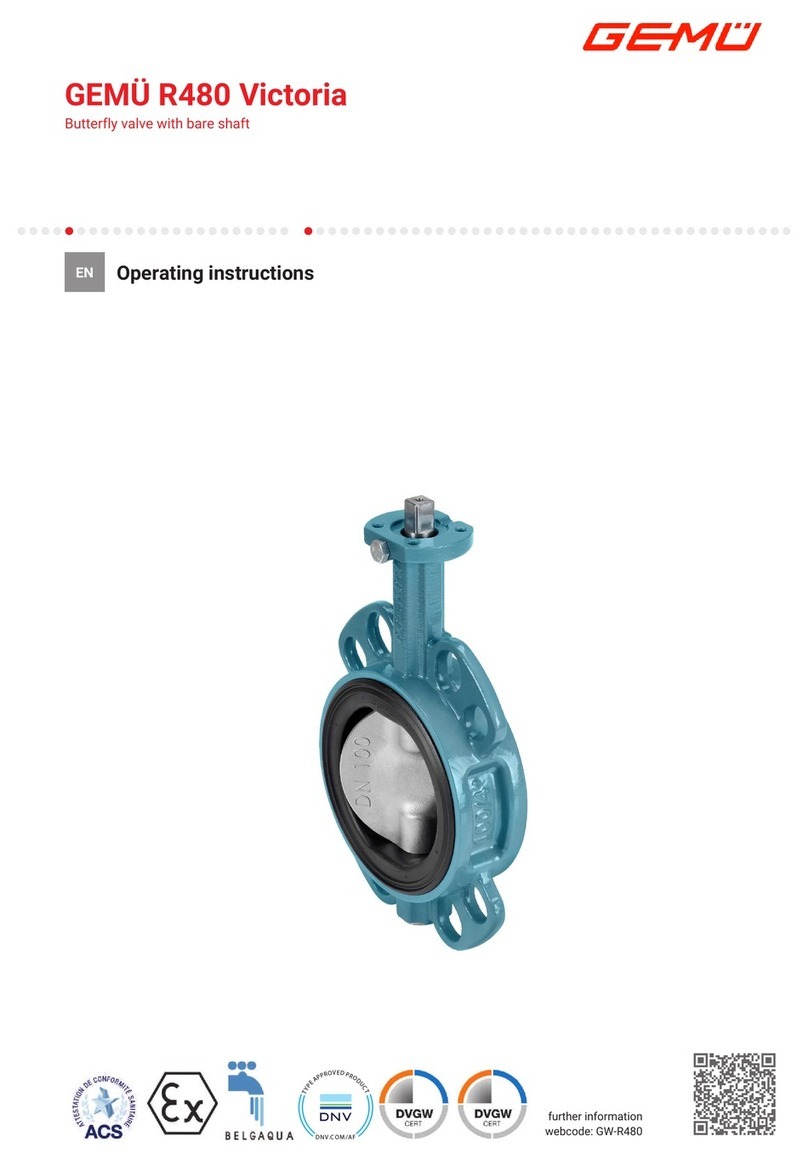
GEM
GEM R480 Victoria operating instructions
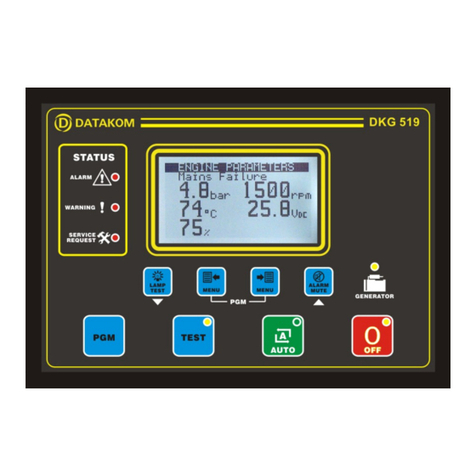
Datakom
Datakom DKG-519 user manual
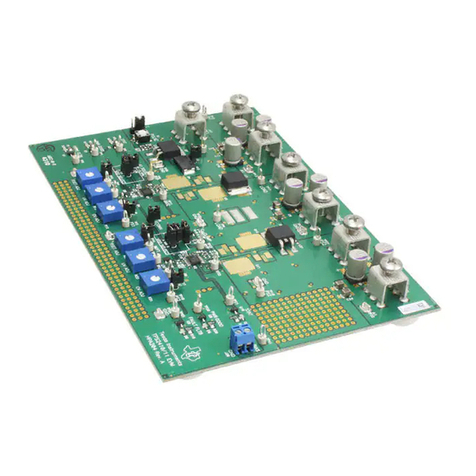
Texas Instruments
Texas Instruments TPS2410EVM user guide

Edwards
Edwards GXS instruction manual

Heatscope
Heatscope LIFT Original installation and instruction manual
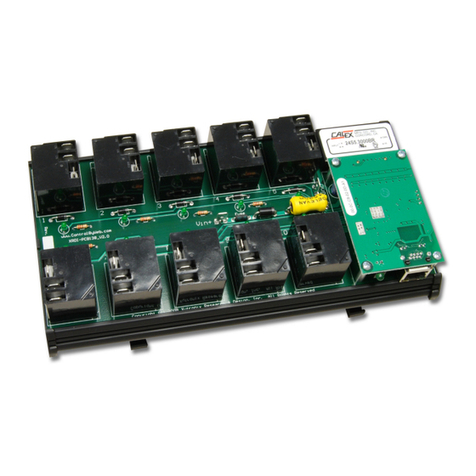
Xytronix Research & Design
Xytronix Research & Design ControlByWeb WebRelay-10 user manual
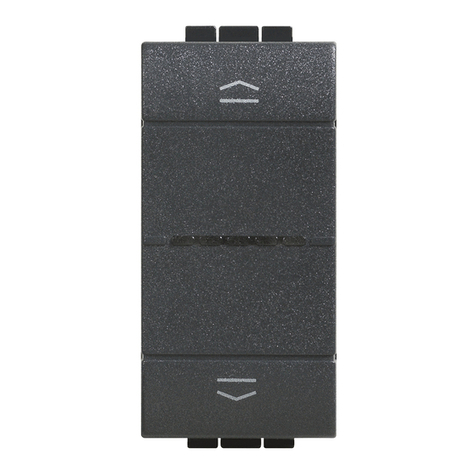
Bticino
Bticino LN4027CWI manual
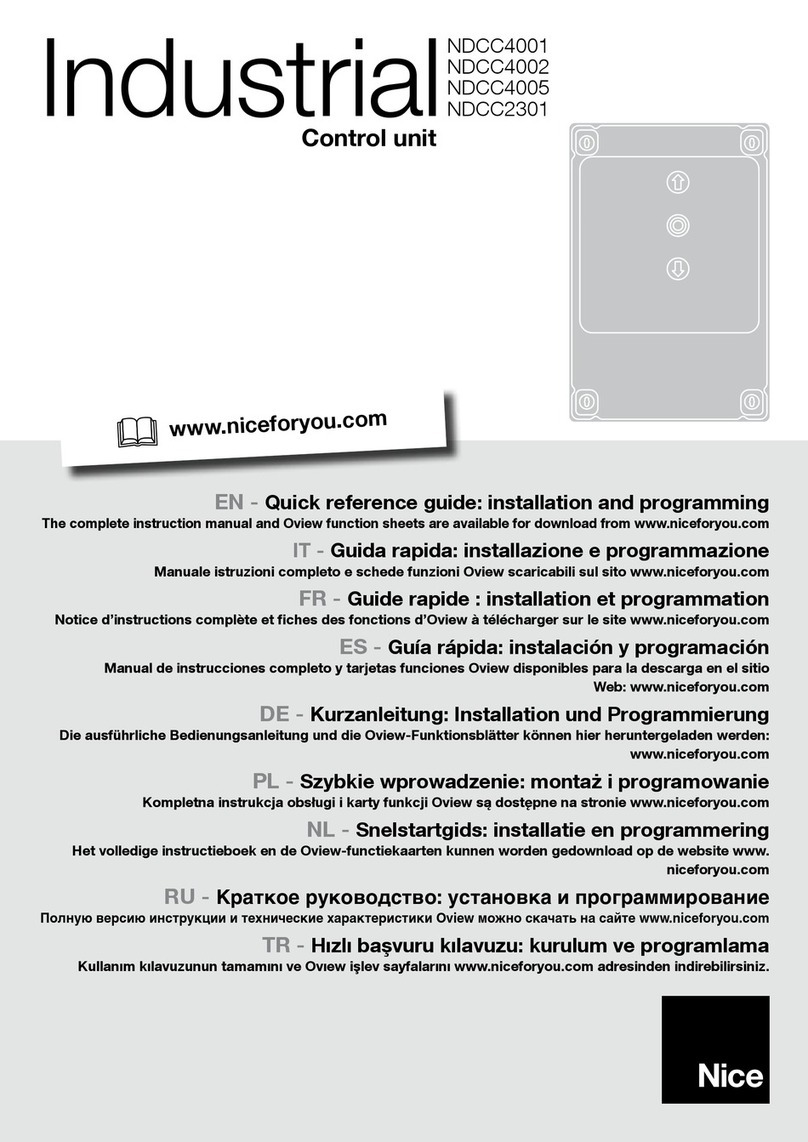
Nice
Nice NDCC4001 Quick reference guide
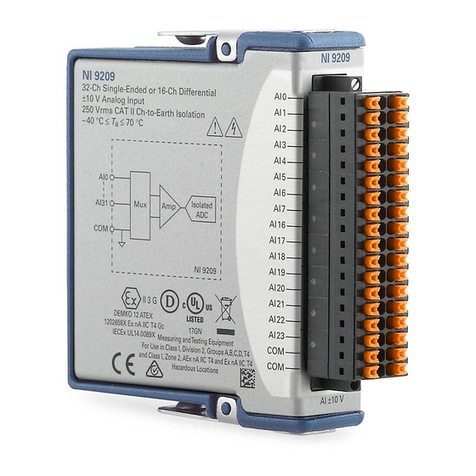
National Instruments
National Instruments NI 9209 CALIBRATION PROCEDURE

DSE
DSE DSE704 operating manual
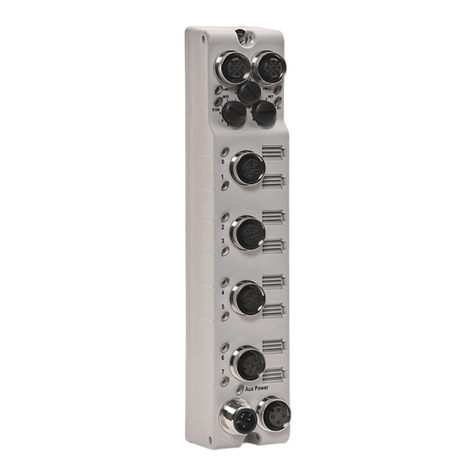
Allen-Bradley
Allen-Bradley ArmorBlock 1732E-8IOLM12R installation instructions
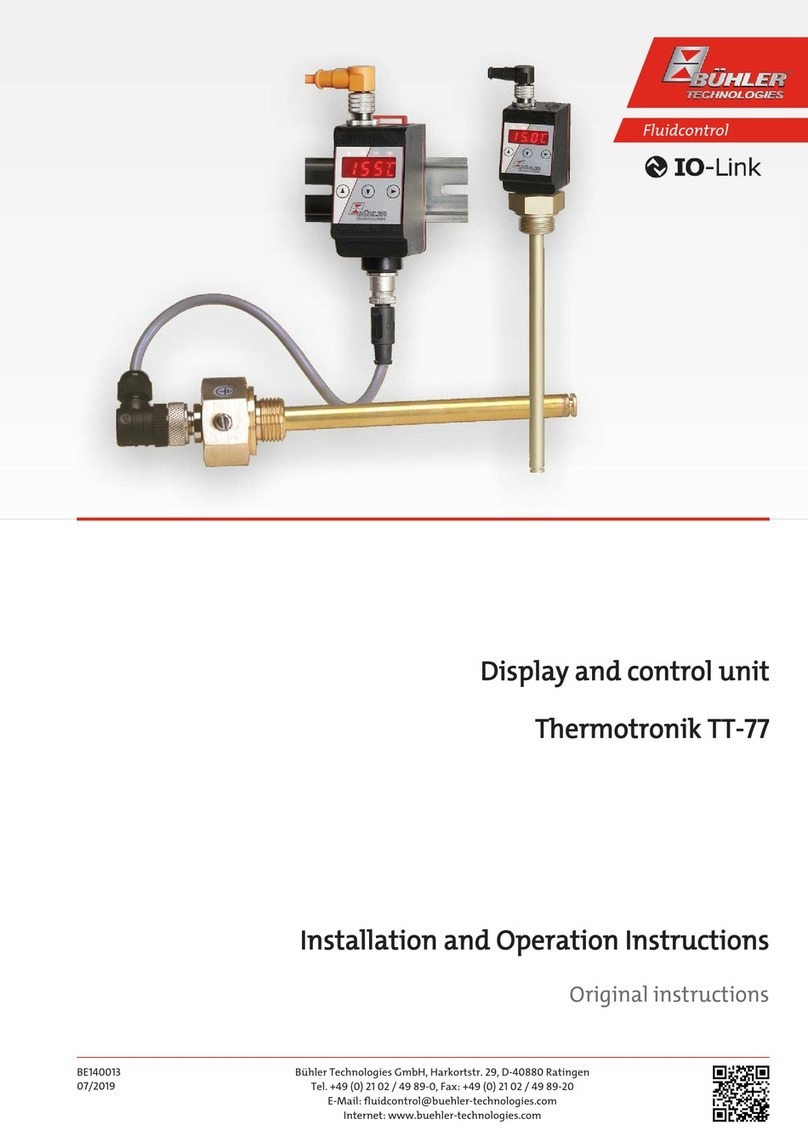
Bühler technologies
Bühler technologies Thermotronik TT-77 Installation and operation instructions
